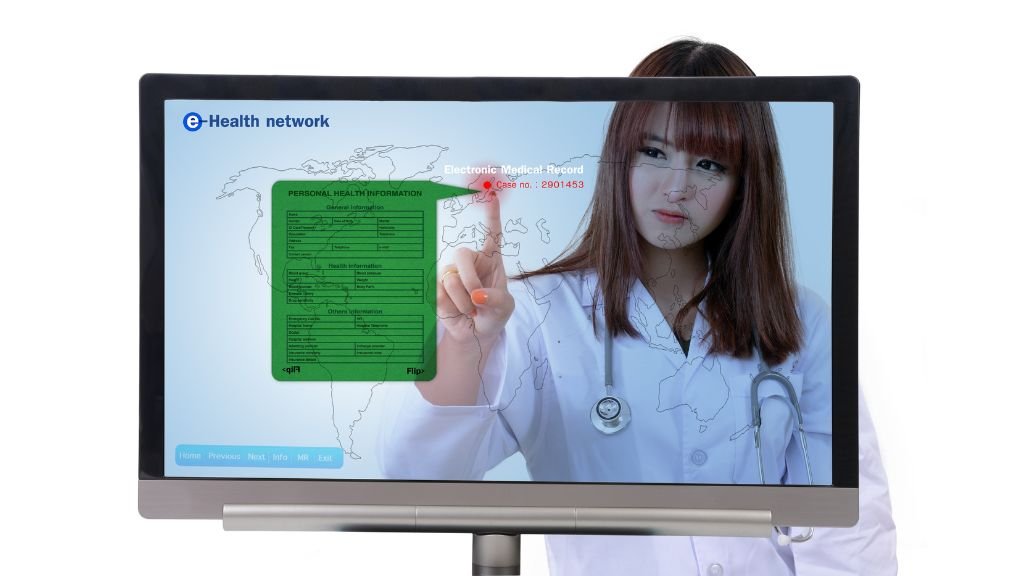Revolutionizing Healthcare: The Impact of Technology on Medical Information
Ronit Agarwal
. 3 min read
Progressively, individuals the world over are finding themselves depending on the internet as a source of health-related information. For example, in the United States alone, over 52 million adults are believed to have accessed the internet as a source for medical and health information. Currently, most of the patients are fairly educated and informed and for this reason, it is important that health care providers support, create, promote, and reference electronic medical information sources that are of sound quality. Additionally, integrating online chat features into healthcare websites can further enhance the accessibility and quality of health-related information.

Future Trends in Healthcare
Improved Access to Medical Information and Data:
1. One of the biggest benefits of the digital revolution has been the ability to store and access data. Healthcare professionals can now retrieve patient data from anywhere.
2. Also, the intranet and internet have allowed healthcare professionals to share medical information rapidly with each other, resulting in more efficient patient care.
Health Apps
1. The digital revolution has also resulted in the development of hundreds of health apps. These apps enable patients to monitor their health and disease, provide them medical information, allow them access to test results and prompt them when it is time to get their check-up.
2. Also, healthcare apps enable healthcare workers to quickly check on test results, drug dosing recommendations and other information they need urgently.
The Internet has helped healthcare in a variety of ways
1. Physicians, nurses and pharmacists have an array of up-to-the-minute information at their fingertips, and so do most patients.
2. According to the National Institutes of Health (NIH). If a patient has and ache, pain or other concern, they can do a quick Internet search and choose reliable sources to learn about some possible reasons for their health concern.
3. Patients who do research online can get value out of the convenience, anonymity and the quantity of information, according to the NIH.
4. The healthcare information patients find on the Internet can help patients and their physicians build a better partnership as a healthcare team but only if patients communicate with their physicians about information they find on the internet.
Email Advantage
1. There is only one of you and hundreds of your patients. At best, you see some of them once a year for an annual exam or manage chronic visits in short visits to try and make time for everyone.
The solution is email that allows you to include protected health information (PHI) so you can talk with specific patients and patient groups about their conditions.
2. Building trust between you and your existing patients is made easier with meaningful email messages Healthcare email marketing enables providers to manage communication effectively and track engagement. In addition, your staff can utilize the information you gather about patient interaction from your emails to improve communication and relationship-building activities.
Telemedicine
That telemedicine combines both technology and medical expertise, in monitoring a patient’s health status from a remote location, was in itself an exciting proposition to look forward to. It has come as a boon to those patients who find it difficult to travel frequently to a hospital. Relevant tools have allowed clinicians to analyses this difficulty at a greater depth.
1. Telemedicine, which enables video or phone appointments between a patient and their health care practitioner, benefits both health and convenience. More health care providers are offering to “see” patients by computer and smartphone.
2. With telemedicine, you don’t have to drive to the doctor’s office or clinic, park, walk or sit in a waiting room when you’re sick. You can see your doctor from the comfort of your own bed or sofa. Virtual visits can be easier to fit into your busy schedule. With telemedicine, depending on your schedule, you may not even have to take leave time from work or arrange for child care.
3. The role of Telemedicine is going to get even bigger and more specific in the rural sectors where access to high-quality healthcare is limited.
4. Some of the best doctors based out of different geographical locations can be consulted by patients for a second opinion with the help of Telemedicine.
5. Telemedicine can also play a key role in epidemiological surveillance with the development of Geographic Information Systems (GIS).
Artificial Intelligence
AI is replacing the labor-intensive and time-consuming process. In the current scenario, several Health Tech start-ups develop software platforms and application programme interfaces. With this, we should be visualizing AI startups in drug discovery, as in the future the drug and pharmaceutical companies will be seen using AI technologies. Some prime elements of artificial intelligence include clinical workflow management, advanced surgery assistance and medical diagnostics.
Conclusion
In conclusion, the healthcare industry has been transformed by technology in recent years, and this trend is set to continue. The increasing availability of medical information online, the development of health apps, the use of email for communication between patients and healthcare providers, telemedicine, and the growing role of artificial intelligence are just some of the areas where technology is making a difference in healthcare. As technology continues to evolve, it is important for both patients and healthcare professionals to stay informed and adapt to the changing landscape of healthcare.
.jpg)
.jpg)